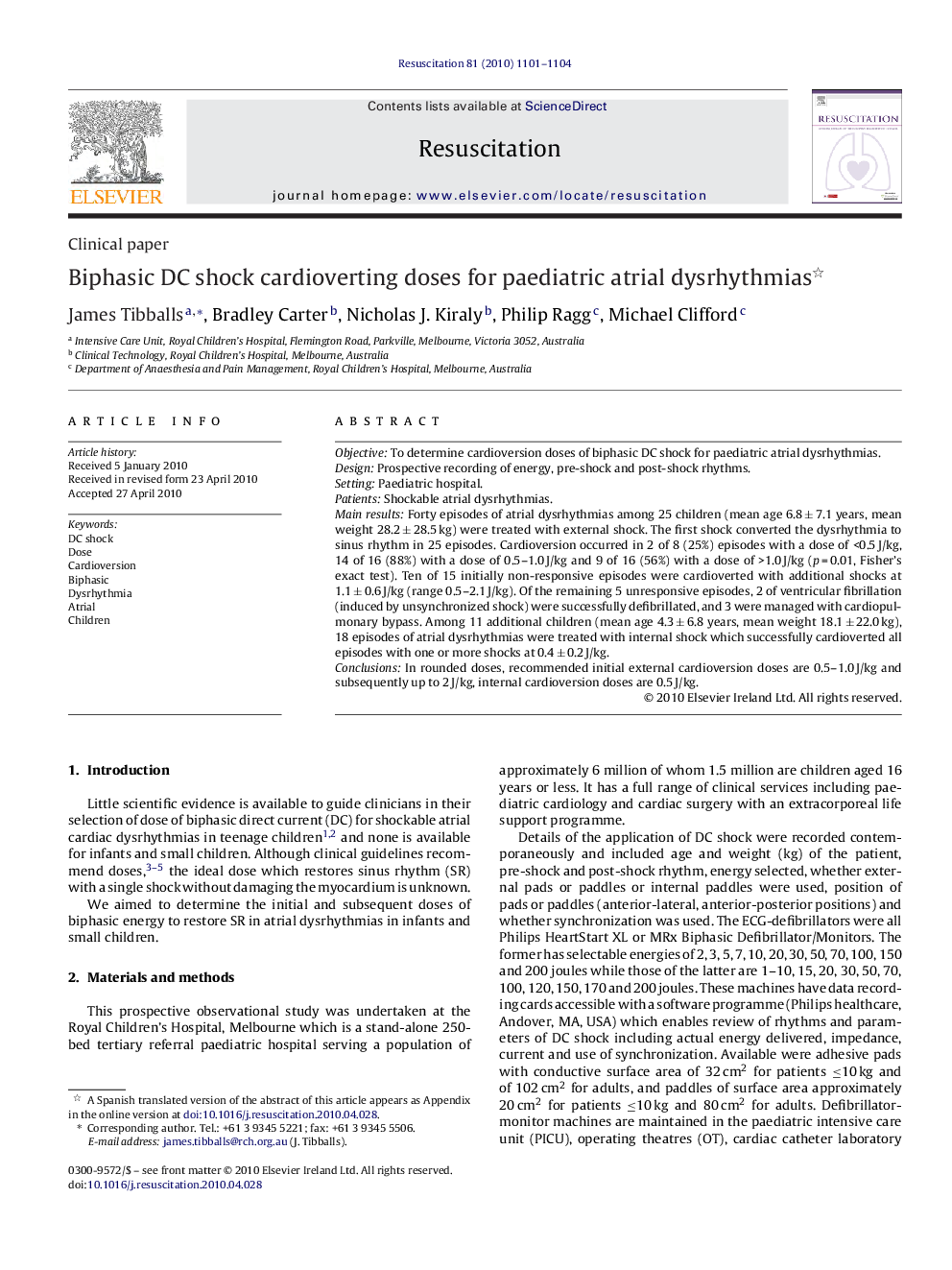| Article ID | Journal | Published Year | Pages | File Type |
|---|---|---|---|---|
| 3009300 | Resuscitation | 2010 | 4 Pages |
ObjectiveTo determine cardioversion doses of biphasic DC shock for paediatric atrial dysrhythmias.DesignProspective recording of energy, pre-shock and post-shock rhythms.SettingPaediatric hospital.PatientsShockable atrial dysrhythmias.Main resultsForty episodes of atrial dysrhythmias among 25 children (mean age 6.8 ± 7.1 years, mean weight 28.2 ± 28.5 kg) were treated with external shock. The first shock converted the dysrhythmia to sinus rhythm in 25 episodes. Cardioversion occurred in 2 of 8 (25%) episodes with a dose of <0.5 J/kg, 14 of 16 (88%) with a dose of 0.5–1.0 J/kg and 9 of 16 (56%) with a dose of >1.0 J/kg (p = 0.01, Fisher's exact test). Ten of 15 initially non-responsive episodes were cardioverted with additional shocks at 1.1 ± 0.6 J/kg (range 0.5–2.1 J/kg). Of the remaining 5 unresponsive episodes, 2 of ventricular fibrillation (induced by unsynchronized shock) were successfully defibrillated, and 3 were managed with cardiopulmonary bypass. Among 11 additional children (mean age 4.3 ± 6.8 years, mean weight 18.1 ± 22.0 kg), 18 episodes of atrial dysrhythmias were treated with internal shock which successfully cardioverted all episodes with one or more shocks at 0.4 ± 0.2 J/kg.ConclusionsIn rounded doses, recommended initial external cardioversion doses are 0.5–1.0 J/kg and subsequently up to 2 J/kg, internal cardioversion doses are 0.5 J/kg.
